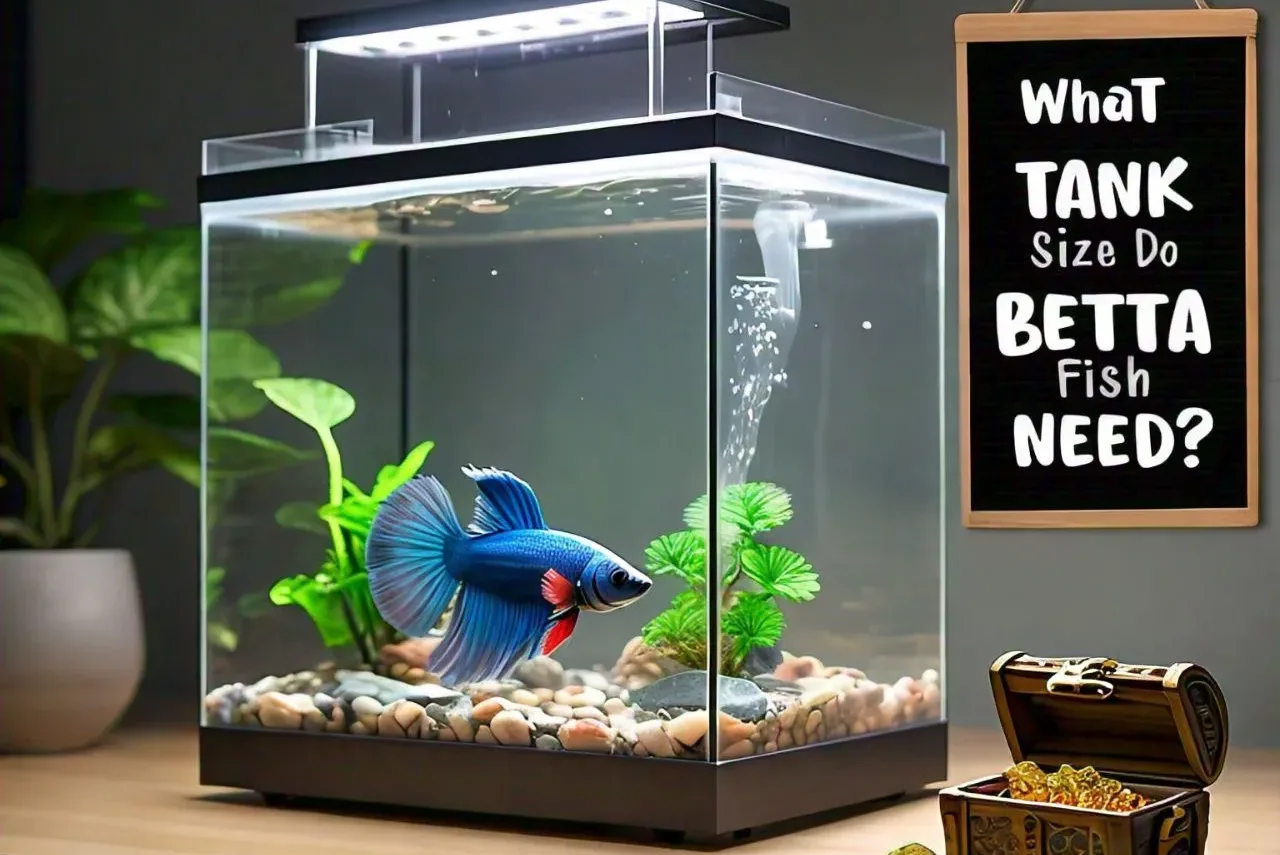The ideal tank size for a betta fish is at least 5 gallons. A smaller tank might seem okay, but a 5-gallon tank gives your betta enough space to swim and explore, which makes them happier and healthier.
It also helps keep the water clean for longer, which is good for your fish’s health. So, even though bettas can survive in smaller tanks, a 5-gallon tank is the best choice for them to thrive.
Factors You Should Consider Before Buying
There are a few important things to keep in mind:
Tank Shape Matters
- A wider tank gives them more space to move. A narrow or tall tank might look nice, but it doesn’t give your betta the best environment to swim freely.
Tank Decorations and Space
- It’s fun to decorate your tank with plants, rocks, or little caves, but remember not to overcrowd it.
Get a Tank with a Lid
- Bettas can jump! To keep your fish safe, always choose a tank with a lid.
These tips will help you create a safe and comfortable space for your betta fish to thrive.
The Problem With Betta Bowls
Betta bowls might seem like a good idea, but they have a lot of problems.
- There’s no space for important equipment like a heater or filter, which betta fish need to stay healthy.
- It’s hard to keep the water stable in a small bowl, so harmful things can build up quickly.
- Betta fish don’t have enough room to swim around, which can stress them out.
In the end, betta bowls just aren’t a good choice for these beautiful fish.
How to Set Up the Best Betta Habitat:

To set up the best home for your betta fish, you’ll need to focus on a few key things to keep them happy and healthy.
Aquarium:
Start with a tank that’s at least 5 gallons. A bigger tank gives your betta more space to swim and keeps the water cleaner for longer.
Water:
Use treated tap water or special betta water. Make sure the water is clean and free of harmful chemicals. Keep the water temperature between 76-82°F.
Filter:
A gentle filter is important. It keeps the water clean by removing dirt and harmful substances. Just make sure the water flow isn’t too strong, as bettas prefer calm water.
Heater:
Bettas are tropical fish, so they need warm water. A heater will keep the water at a steady temperature, which helps your betta stay healthy.
Light:
Bettas need light during the day and darkness at night. A soft aquarium light works well, but don’t leave it on all the time. Give them a regular day-night cycle.
Substrate:
The bottom of the tank should have some kind of substrate, like smooth gravel or sand. This helps mimic their natural habitat and gives the tank a natural look.
Decor:
Bettas love to explore, so add decorations like plants, caves, or small tunnels. Just make sure there are no sharp edges that could hurt them. Live plants can be great too, as they help keep the water clean.
By setting up these things properly, you’ll create a cozy and safe home for your betta.
FAQs
- Why do fish stores sell bettas in small cups and vases?
Fish stores often sell bettas in small cups or vases because bettas can survive in very small amounts of water, and it’s more convenient for the store.
However, these small containers are not good for the fish long-term because they don’t have enough space to swim and the water gets dirty quickly.
- Can a betta survive in a small tank?
A betta can survive in a small tank, but it’s not the best environment for them. While they can live in small spaces, a bigger tank with more room to swim and better water quality will help them live happier and healthier lives.
- What happens if you keep a betta in a tank that’s too small?
If you keep a betta in a tank that’s too small, the fish might become stressed and sick more easily. Small tanks often have poor water quality, which can make it harder for the betta to breathe and stay healthy.
They also don’t have enough space to move around, which can lead to boredom and frustration.
- Does the rule of “5-gallon minimum” always apply?
The “5-gallon minimum” rule is a good guideline because it provides enough space and better water quality for the betta.
While a slightly smaller tank can work, it’s important to make sure the betta has enough room to swim and that the water stays clean.
- Tank size for a baby betta?
For a baby betta, a tank of at least 2.5 gallons is recommended. Baby bettas need clean water and space to grow, so even though they’re small, they still benefit from a larger tank.
- Is a 3.7-gallon tank enough for one betta?
A 3.7-gallon tank can be enough for one betta, but it’s close to the minimum size. It’s important to keep the water clean and make sure the betta has some room to swim. If possible, a slightly bigger tank would be better for the fish’s overall well-being.
Conclusion
Choosing the right tank size for your betta fish is one of the best things you can do to keep them happy and healthy. While it might be tempting to go for a smaller tank or a bowl, giving your betta at least 5 gallons of space makes a big difference in their well-being.
A proper tank setup not only provides enough room for swimming and exploring but also helps maintain cleaner water, which is key to your betta’s health.
By understanding the needs of your fish and setting up a cozy, safe habitat, you’re giving your betta the best chance to thrive.
